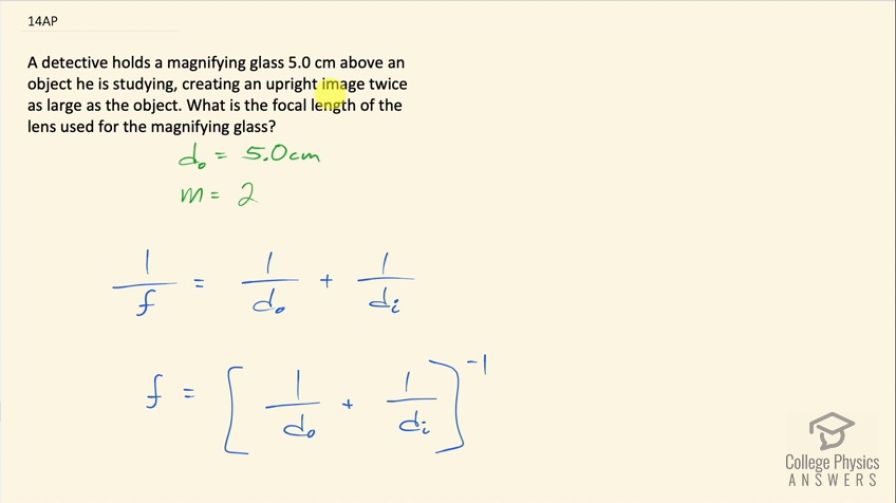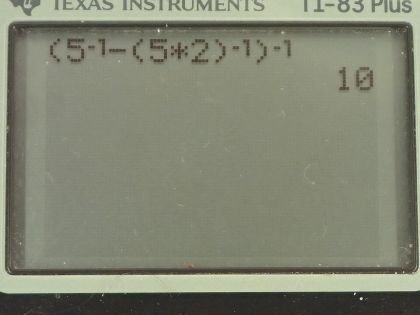Question
A detective holds a magnifying glass 5.0 cm above an object he is studying, creating an upright image twice as large as the object. What is the focal length of the lens used for the magnifying glass?
Final Answer
Solution video
OpenStax College Physics for AP® Courses, Chapter 25, Problem 14 (Test Prep for AP® Courses)

vote with a rating of
votes with an average rating of
.
Calculator Screenshots
Video Transcript
This is College Physics Answers with Shaun Dychko. A detective holds a magnifying glass 5.0 centimeters above an object he's studying and it creates an upright image and the word upright means that the magnification is positive and the image is twice as large as the object so the magnification is positive 2; the object distance is this 5.0 centimeter distance here and we'll use this thin lens equation to figure out the focal length but we need to know what is the image distance? Well first let's solve this for f by raising both sides to the exponent negative 1 so we have f equals 1 over d o plus 1 over d i all to the negative 1 and we'll use this formula for magnification to substitute for d i. So magnification is the negative of the image distance divided by the object distance and we can multiply both sides by negative object distance to solve for d i so d i is negative d o times m. So we substitute this in place of d i in our thin lens equation. So we have the focal length then is 1 over object distance plus 1 over negative object distance times magnification all to the negative 1. So that's 1 over 5 centimeters plus 1 over negative 5 centimeters times 2 and then raise that all to the exponent negative 1 and that gives us positive 10 centimeters is the focal length.
